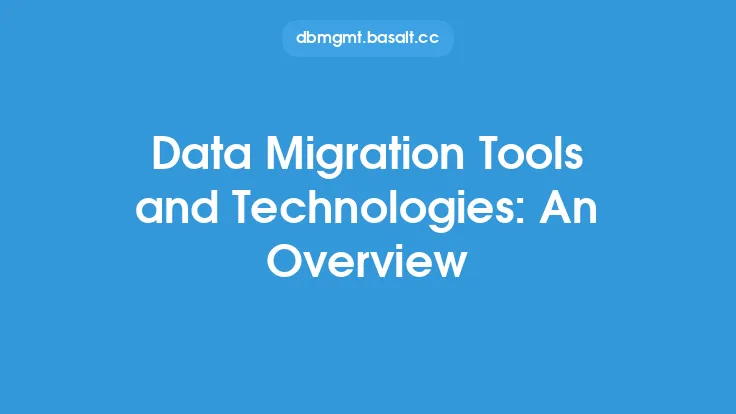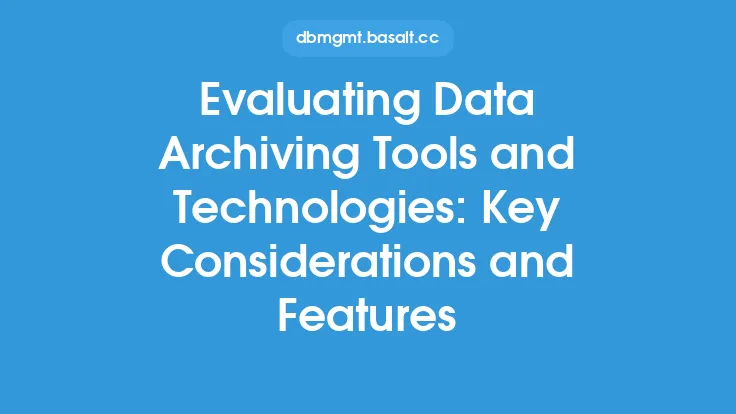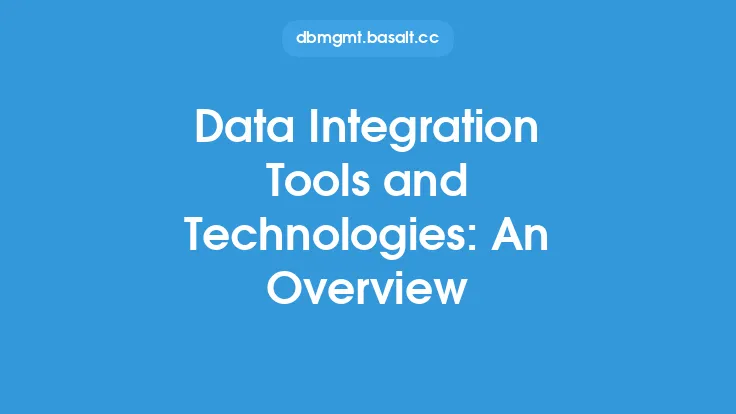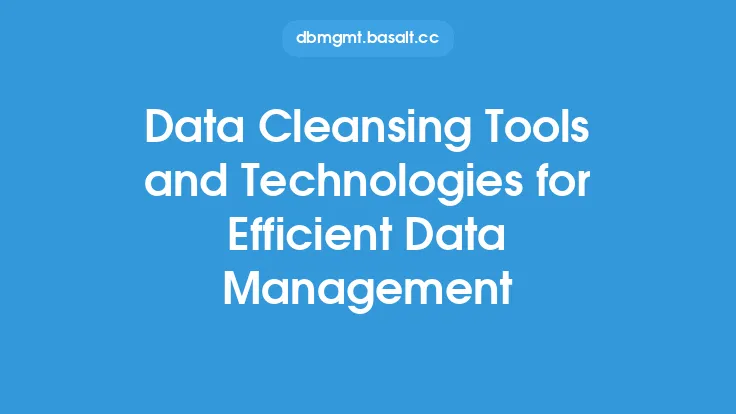Data masking is a crucial aspect of database security, and it involves the use of various tools and technologies to protect sensitive information. These tools and technologies play a vital role in ensuring that sensitive data is not exposed to unauthorized individuals or entities. In this article, we will delve into the world of data masking tools and technologies, exploring their features, functionalities, and applications.
Introduction to Data Masking Tools
Data masking tools are software applications designed to mask sensitive data in databases, making it unusable to unauthorized users. These tools use various algorithms and techniques to replace sensitive data with fictional or anonymized data, ensuring that the original data remains protected. Data masking tools can be categorized into two main types: static data masking tools and dynamic data masking tools. Static data masking tools mask data at rest, while dynamic data masking tools mask data in real-time, as it is being accessed.
Features of Data Masking Tools
Data masking tools come with a range of features that enable them to effectively mask sensitive data. Some of the key features of data masking tools include:
- Data discovery: This feature enables data masking tools to identify sensitive data within a database.
- Data classification: This feature enables data masking tools to categorize sensitive data based on its type and sensitivity level.
- Masking algorithms: Data masking tools use various masking algorithms, such as encryption, tokenization, and redaction, to mask sensitive data.
- Data masking rules: Data masking tools enable users to create custom masking rules based on their specific needs and requirements.
- Integration with databases: Data masking tools can integrate with various databases, including relational databases, NoSQL databases, and cloud databases.
Technologies Used in Data Masking
Data masking tools and technologies leverage various technologies to mask sensitive data. Some of the key technologies used in data masking include:
- Encryption: Encryption is a widely used technology in data masking, which involves converting plaintext data into unreadable ciphertext.
- Tokenization: Tokenization involves replacing sensitive data with tokens or placeholders, making it unusable to unauthorized users.
- Redaction: Redaction involves removing or masking sensitive data from documents and files.
- Data anonymization: Data anonymization involves replacing sensitive data with fictional or anonymized data, making it impossible to identify individuals or entities.
- Machine learning: Machine learning algorithms can be used to identify sensitive data and create custom masking rules.
Data Masking Tools and Technologies for Different Data Types
Different data types require different data masking tools and technologies. For example:
- Structured data: Structured data, such as databases and spreadsheets, require data masking tools that can integrate with databases and use masking algorithms such as encryption and tokenization.
- Unstructured data: Unstructured data, such as documents and files, require data masking tools that can use redaction and data anonymization techniques.
- Semi-structured data: Semi-structured data, such as XML and JSON files, require data masking tools that can use a combination of masking algorithms and techniques.
Cloud-Based Data Masking Tools and Technologies
Cloud-based data masking tools and technologies are becoming increasingly popular, as they offer greater flexibility and scalability. Cloud-based data masking tools can be used to mask sensitive data in cloud databases, such as Amazon Web Services (AWS) and Microsoft Azure. Some of the key benefits of cloud-based data masking tools include:
- Scalability: Cloud-based data masking tools can scale to meet the needs of large and complex databases.
- Flexibility: Cloud-based data masking tools can be used to mask sensitive data in various cloud databases and platforms.
- Cost-effectiveness: Cloud-based data masking tools can be more cost-effective than on-premises data masking tools, as they eliminate the need for hardware and software maintenance.
Open-Source Data Masking Tools and Technologies
Open-source data masking tools and technologies are also available, offering a cost-effective and customizable solution for data masking. Some of the key benefits of open-source data masking tools include:
- Customizability: Open-source data masking tools can be customized to meet the specific needs and requirements of an organization.
- Cost-effectiveness: Open-source data masking tools are free to use and distribute, eliminating the need for licensing fees.
- Community support: Open-source data masking tools often have a large community of users and developers, who can provide support and guidance.
Conclusion
In conclusion, data masking tools and technologies play a vital role in protecting sensitive information in databases. These tools and technologies use various algorithms and techniques to mask sensitive data, making it unusable to unauthorized users. By understanding the features, functionalities, and applications of data masking tools and technologies, organizations can ensure that their sensitive data is protected and secure. Whether it's static or dynamic data masking, cloud-based or on-premises, data masking tools and technologies are essential for any organization that handles sensitive data.





